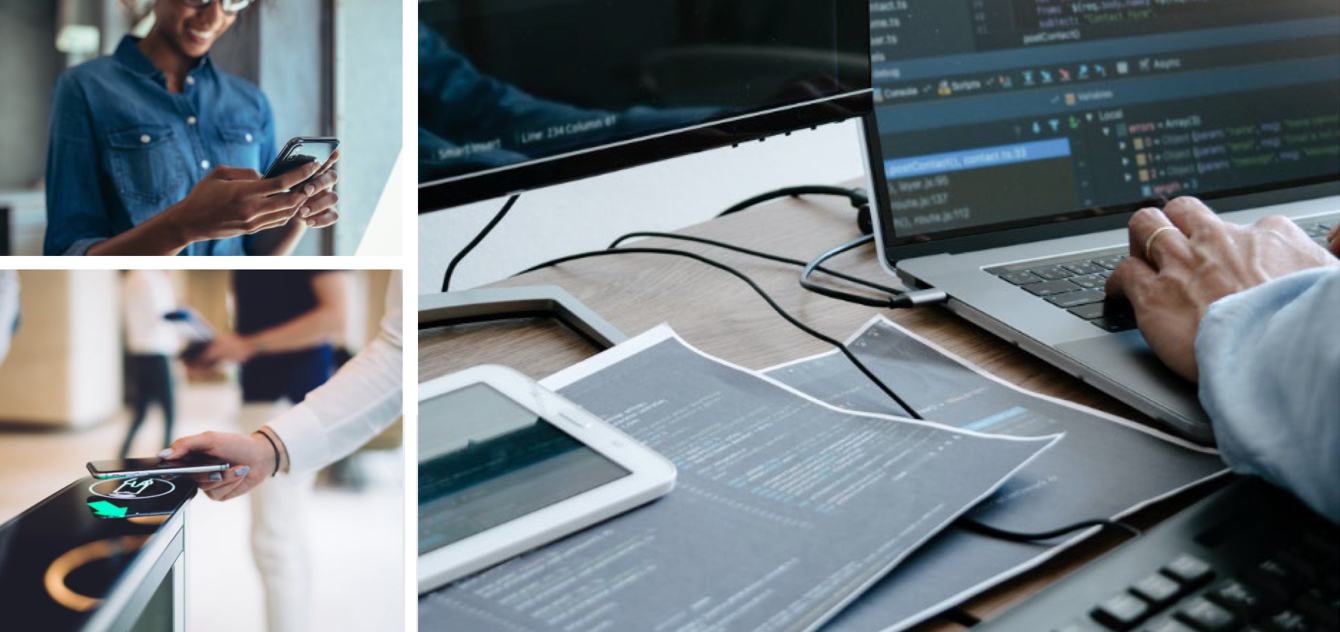22 - Aug - 2020
The Time Has Come for the Smart Office
This is the third white paper in an ongoing series focusing on helping organizations develop their plans to return to the workplace following the COVID-19 closings across the country.
The concept of the Smart Home and home automation has gained significant momentum in recent years. The idea allows homeowners to control their audio and video media, heating and cooling, lighting, home security and more, in and around their homes, all from an app on their smartphone. The growth in the home automation industry is forecast to continue through the foreseeable future, projected to become a more than $17 Billion industry by 2024.
The parallel idea for commercial office spaces, the Smart Office, is a bit more nascent. The notion of saying “hey Alexa…” at the workplace hasn’t quite taken hold in scale as it has at home. Now, as businesses and organizations are deep into the implementation of their plans to bring their workforce back into their offices, hospitals and schools post-COVID-19, at CI Select, we expect the Smart Office concept will rapidly catch up to its residential counterpart.
As organizations bring their employees back to their workplaces, many have begun the process of modifying their floorplans, their furniture systems and processes and protocols in an effort to revamp the workplace to reduce the potential for the spread of the virus. Our previous white paper, The Three D’s of Office Furnishing for Post-COVID-19 Return to Work discusses ideas for how to create distance, division and disinfection solutions into the physical space. This white paper will provide insights on how technologies can provide employees all of the same efficiencies and controls in the workplace as they have at their residences with home automation.
As employees come to work, the number of things they could touch in any given day is nearly unfathomable. From the minute they come in the front door to light switches to meeting rooms to video-conferencing technologies and temperature controls, what all seemed innocuous before, now must all be re-evaluated for the risks they pose.
There are many technologies organizations have used successfully previously. Biometrics, motion sensors, smartphone apps and collaboration tools are just some of the many tools organizations have used in a wide variety of capacities.
Now, imagine a future where all of these disparate technologies form an integrated solution that provide your workforce all of the controls and efficiencies and personalization derived from automation while enhancing their well-being by further reducing the risk of viral transmission.
Now, imagine a fully integrated and automated workplace where every employee is able to manage workplace technologies directly from their smartphone. As they approach the front door of the facility, they are able to connect to the sensors on the doors to open hands-free. They receive a push notification asking if they want an elevator called to bring them to their floor without needing to push any buttons.
Once they are in the building, they can see high-traffic areas so they are able to identify the best route to their office or workstation to maintain proper social distancing. They can reserve meeting rooms or conference rooms, control the AV, lighting and temperature in the shared spaces. They can lower the shades or dim the architectural windows all from their smartphone. And over time, it learns the preference of each employee so that when they use the room in the future, it is able to adjust the settings to their known preferences.
As more business is conducted by video conferencing instead of business travel, the employees are able to control the webcam from their smartphones to focus in on the presenter. They are able to dim the lighting and adjust the volume, so their presentation is visible and audible to the video conference participants.
This type of office automation puts greater controls in the hands of the employees while also reducing the amount touching of physical properties and resources that can be conduits to virus transmission. It makes a statement to employees that the company cares about the well-being of their employees. And it makes a statement to customers and prospects that your company is innovative and forward-thinking.


It also gives Facility Managers a new asset that has been hard to come by. At CI Select, we’ve hosted a number of roundtable discussions with some leading Facilities Management executives from across the Midwest. One of the top challenges mentioned in the roundtables is how little access to data they have to be able to make informed decisions on facilities usage.
By bringing office automation into their facilities, they’ll build out a body of data that will help them make informed decisions about future facilities enhancements and modifications based on hard data rather than just relying upon surveys or instincts. This type of office automation will also allow users—the employees—to report into facilities when something is in need of attention. They could use the app to report when lighting, HVAC or AV technologies aren’t working properly so service can be scheduled.

Envisioning this as the future of the workplace with integrated systems that give new controls and efficiencies to employees while enhancing the abilities of Facilities Managers to design and manage their assets isn’t far off. And at CI Select, we see the current pandemic as additional reason to accelerate office automation to soon catch up to the sophistication and market adoption that’s been realized in home automation.
Get this and more delivered to your inbox.
Sign up now for email updates from CI Select.
Previous Article
Happy Holidays
Read ArticleNext Article
